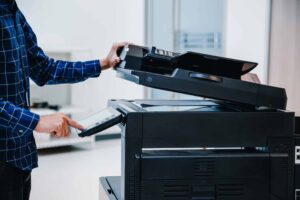Ensuring Conference Room Privacy in Malaysia’s Corporate Landscape
In today’s hyper-connected, data-driven business environment, the conference room is no longer just a meeting space; it’s a crucible for sensitive strategy, confidential negotiations, valuable intellectual property, and personal employee discussions. In Malaysia, where rapid digitalization intersects with stringent privacy regulations and a diverse corporate culture, safeguarding the privacy of these spaces is paramount. Breaches can lead to catastrophic financial losses, reputational damage, legal liabilities, and eroded trust. This article explores the multifaceted nature of conference room privacy in Malaysia and outlines the essential measures businesses must implement to create truly secure sanctuaries for communication.
Understanding the Privacy Spectrum in Malaysian Conference Rooms
Privacy isn’t a single concept; it’s a layered requirement encompassing:
- Physical Privacy: Preventing unauthorized individuals from seeing or hearing confidential discussions within the room.
- Digital Privacy: Securing data shared electronically during meetings (screen shares, file transfers, video calls) and protecting the meeting technology itself from cyber threats.
- Informational Privacy: Ensuring confidentiality of the meeting’s content, decisions, and participant identities.
- Personal Privacy: Respecting the privacy rights of employees and guests during meetings, particularly concerning personal data shared or recorded.
Key Threats to Conference Room Privacy in Malaysia
- Visual Eavesdropping: Unauthorized viewing through windows, glass walls, or via camera systems.
- Acoustic Leakage: Sound traveling through walls, doors, ceilings, ventilation, or open windows.
- Unauthorized Access: Intruders entering unlocked rooms or gaining access via compromised access control systems.
- Cyber Intrusions: Hacking into conferencing systems (cameras, microphones, displays), intercepting unsecured Wi-Fi traffic, or malware compromising shared devices.
- Inadvertent Disclosure: Careless handling of physical documents, unattended screens, or discussions in adjacent common areas.
- Insider Threats: Employees or contractors deliberately or accidentally leaking information.
- Inadequate Data Handling: Failure to secure recordings, transcripts, or shared files according to the Personal Data Protection Act 2010 (PDPA).
Essential Privacy Safeguards for Malaysian Conference Rooms
1. Fortifying the Physical Envelope:
* Soundproofing: Invest in high-performance acoustic treatments: Mass-Loaded Vinyl (MLV) in walls/ceilings, specialized acoustic panels (Class A absorption), solid-core doors with proper seals, and acoustic door sweeps. Double-glazed or laminated soundproof glass is crucial for external windows or internal glazing.
* Visual Privacy: Utilize switchable privacy glass (smart glass) for internal partitions, high-quality blinds or curtains for external windows, and strategic placement of frosted film on door panels. Ensure sightlines from corridors or adjacent spaces are blocked.
* Access Control: Implement robust systems beyond simple keys:
* Electronic Access: RFID/NFC card readers, biometric scanners (fingerprint, facial recognition), or PIN pads integrated with the building/company security system.
* Authentication Levels: Differentiate access – some rooms accessible to all staff, others restricted to specific departments or seniority levels.
* Audit Trails: Maintain logs of who accessed the room and when.
* “Meeting in Progress” Indicators: Smart LED panels outside the door clearly signal occupancy and can integrate with booking systems to prevent accidental interruptions.
2. Securing the Digital Frontier:
* Hardened Conferencing Systems: Choose reputable vendors prioritizing security. Ensure systems receive regular firmware/software updates. Disable unused features (like cloud recording if not needed).
* Network Segmentation: Place conference room AV equipment on a separate, secure VLAN (Virtual Local Area Network) isolated from the main corporate network and guest Wi-Fi.
* Enterprise-Grade Encryption: Mandate end-to-end encryption (E2EE) for all video conferencing platforms used (e.g., Zoom, Teams with E2EE enabled where possible, specialized secure platforms). Ensure encryption for data-in-transit and data-at-rest.
* Secure Wireless Sharing: Use enterprise solutions like Barco ClickShare (Conference model) or Kramer Via that create secure, encrypted ad-hoc networks for screen sharing, avoiding open casting protocols.
* Device Management: Enforce strong security policies (passcodes, encryption, MDM solutions) on any BYOD or dedicated meeting room devices. Provide secure docking stations.
* Regular Vulnerability Scanning & Penetration Testing: Proactively identify and patch security weaknesses in the room’s technology stack.
3. Implementing Robust Policies & Procedures:
* PDPA Compliance: Establish strict protocols for handling any personal data discussed or recorded in meetings. Obtain clear consent for recordings. Define retention periods and secure deletion processes for recordings and transcripts.
* Clear Usage Policies: Define what types of meetings require which level of privacy (e.g., standard team meeting vs. M&A negotiation). Mandate locking doors for confidential discussions.
* Clean Desk/Clean Screen Policy: Enforce removal of all physical documents and logging out/shutting down screens immediately after meetings.
* NDAs (Non-Disclosure Agreements): Require signed NDAs for meetings involving highly sensitive information with external parties.
* Employee Training: Regularly train employees on privacy threats (phishing targeting meeting links, shoulder surfing, careless talk), secure conferencing practices, PDPA obligations, and how to use the room’s privacy features correctly.
* Incident Response Plan: Have a clear plan for responding to suspected or actual privacy breaches originating from a conference room.
4. Advanced Technologies for Enhanced Security:
* White Noise / Sound Masking Systems: Emit subtle, engineered background sound to make speech unintelligible outside the room, particularly in adjacent corridors or offices.
* RF Signal Detectors: Can identify unauthorized recording devices (bugs) transmitting signals within the room.
* Camera/Microphone Kill Switches: Physical switches or software controls that definitively disconnect power/data to cameras and microphones when not in active use.
* Secure Video Conferencing Platforms: Consider platforms offering higher security certifications (e.g., FedRAMP, ISO 27001) for the most sensitive discussions.
The Malaysian Context: Regulations and Nuances
- PDPA (Personal Data Protection Act 2010): This is the cornerstone. It mandates lawful processing, purpose limitation, data accuracy, security safeguards, retention limitations, and rights for data subjects (including access and correction). Any personal data discussed or recorded in a conference room falls under PDPA.
- Sector-Specific Regulations: Industries like finance (BNM guidelines) and healthcare may have additional stringent privacy requirements.
- Cultural Sensitivity: Be mindful of cultural norms around privacy and discretion in communication styles.
- Halal Considerations: For meetings involving F&B, ensure caterers handle data related to dietary requirements confidentially.
5 FAQs on Conference Room Privacy in Malaysia
1. Are we legally required to inform meeting participants if we are recording?
Answer: Absolutely yes, under the PDPA. Recording a meeting captures personal data (voices, images, opinions). You must obtain explicit, informed consent from all participants before starting the recording. Clearly state the purpose of the recording, how it will be used, stored, and for how long. A simple announcement and verbal agreement are insufficient; best practice is documented consent (e.g., checkbox in the meeting invite or a consent screen at the start of the recording).
2. How effective is soundproofing really? What’s the minimum we should do?
Answer: Proper soundproofing is highly effective but requires a holistic approach. The absolute minimum for any confidential space includes:
- Solid-core door with full perimeter seals (top, sides, bottom acoustic sweep).
- Sealing all gaps (around conduits, ducts, light fixtures) with acoustic sealant.
- Basic acoustic panels on major wall surfaces (aim for NRC 0.8+).
For truly confidential rooms, invest in MLV in walls/ceiling, specialized door assemblies, and potentially a floating floor. A professional acoustic assessment is recommended.
3. Can someone hack into our conference room camera or microphone?
Answer: Yes, it’s a significant risk. Internet-connected AV devices are common targets. Mitigate this by:
- Choosing reputable vendors with strong security track records and regular updates.
- Network Segmentation: Isolate AV equipment on a separate VLAN.
- Strong Passwords: Change all default credentials immediately; use complex, unique passwords.
- Disable UPnP: On routers to prevent devices opening insecure ports.
- Physical Kill Switches: Use them to physically disconnect cameras/mics when not in use.
- Regular Security Updates: Patch firmware promptly.
4. What happens if confidential information is leaked from our conference room?
Answer: The consequences can be severe:
- Legal Liability: Breaches of PDPA can result in fines up to RM 500,000 and/or jail time for officers. Breach of contract (e.g., NDA) can lead to lawsuits.
- Reputational Damage: Loss of client, partner, and investor trust can be devastating.
- Competitive Harm: Leaked strategies or IP can benefit competitors.
- Regulatory Action: Sector-specific regulators (BNM, SC) may impose penalties.
- Employee Distrust: Breaches erode internal morale and trust in leadership.
5. What’s the most overlooked aspect of conference room privacy?
Answer: Post-Meeting Data Hygiene and “Human Factor” vulnerabilities. Companies often focus on the meeting itself but neglect:
- Secure Storage & Deletion: Recordings, transcripts, and shared files must be stored encrypted and deleted according to the defined retention policy (PDPA requirement).
- Physical Document Left Behind: Sensitive flip charts, whiteboard contents, or printed materials must be erased/collected/shredded immediately.
- Unattended Devices: Laptops left logged in with sensitive documents open.
- Discussions Outside the Room: Participants continuing confidential talks in elevators, lobbies, or cafes where they can be overheard.
- Insufficient Training: Employees unaware of risks or proper procedures.
Conclusion: Privacy as a Strategic Imperative
In Malaysia’s competitive business environment, conference room privacy is not an IT afterthought or a facilities management checkbox. It is a fundamental requirement for operational integrity, legal compliance (especially PDPA), and maintaining trust. By implementing a comprehensive strategy combining robust physical security, cutting-edge digital defenses, stringent policies, and continuous employee awareness, Malaysian businesses can transform their conference rooms into secure fortresses. This allows leaders and teams to collaborate freely, innovate boldly, and negotiate confidently, knowing their most valuable conversations remain truly confidential. Investing in state-of-the-art privacy measures is an investment in the company’s resilience, reputation, and future success.
Add New Post ‹ Fresh Voice Hub- Guest Posting Site — WordPress










